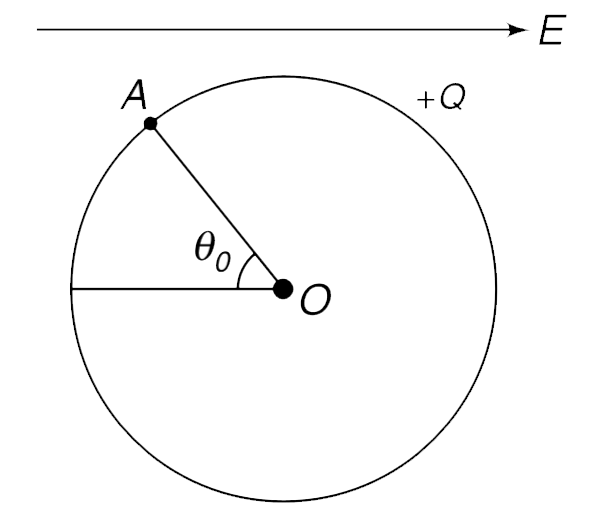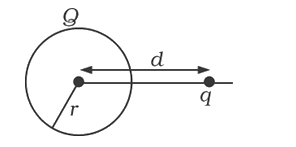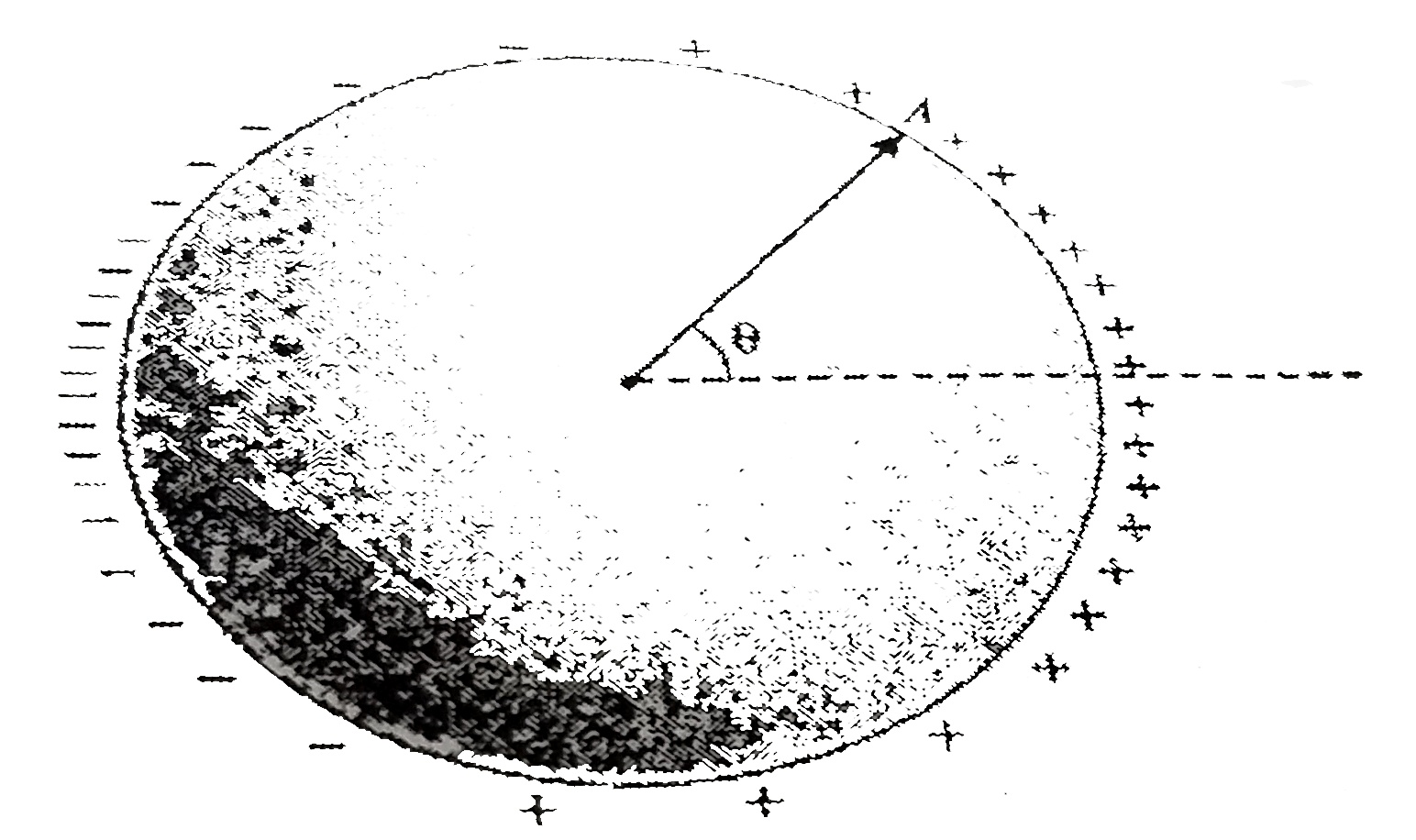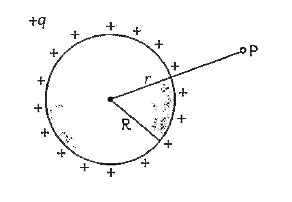A conducting sphere of radius R having charge Q is placed in a uniform external field E. O is the centre of the sphere and A is a point on the sphere of the sphere such that AO makes an angle of with the opposite direction fo external field. calculate the potential at point A due to charge on the sphere only.

The correct Answer is:
Step by step video, text & image solution for A conducting sphere of radius R having charge Q is placed in a uniform external field E. O is the centre of the sphere and A is a point on the sphere of the sphere such that AO makes an angle of theta_(0)=60^(@) with the opposite direction fo external field. calculate the potential at point A due to charge on the sphere only. by Physics experts to help you in doubts & scoring excellent marks in Class 12 exams.
Topper's Solved these Questions
Similar Questions
A solid conducting sphere of radius r is having a charge of Q and point charge q is a distance d from the centre of sphere as shown. The electric potential at the centre of the solid sphere is :
 View Solution
View SolutionA non-conducting sphere of radius R is given a charge Q. Charge is uniformly distributed in its volume. The electric potential at centre and at the surface of sphere respectively are
View Solution
Knowledge Check
- Question 1 - Select One
A conducting sphere of radius R is given a charge Q. The electric potential and the electric field at the centre of the sphere respectively are
AZero and Q4πε0R2BQ4πε0R2 and zeroCQ4πε0R and Q4πε0R2DBoth are zero - Question 2 - Select One
A conducting sphere of radius R is charged to a potential of V volts. Then the electric field at a distance r(>R) from the centre of the sphere would be
ARVr2BVRCrVR2DR2Vr2 - Question 3 - Select One
A conducting sphere of radius R is charged to a potential of V volts. Then the electric field at a distance r(>R) from the centre of the sphere would be
AVrBR2Vr3CRVr2DrVR2
A non-conducting sphere of radius R is given a charge Q. Charge is uniformly distributed in its volume. The electric potential at centre and at the surface of sphere respectively are
View SolutionElectric field intensity at point P due to charge distributed over a sphere is:
 View Solution
View SolutionA solid conducting sphere of radius R is placed in a uniform electric field E as showo in figure. Due to electric field non uniform surface charges are induced on the surface of the sphere. Consider a point A on the surface of sphere at a polar angle θ from the direction of electric field as shown in figure. Find the surface density of induced charges at point A in terms of electric field and polar angle θ : lt brgt
 View Solution
View SolutionA hollow insulated conducting sphere of radius 2m, is given a charge of 5 μC. What will be the electric field at the centre of the sphere?
View SolutionElectric field intensity at point P due to charge distributed over a sphere is:
 View Solution
View Solution

